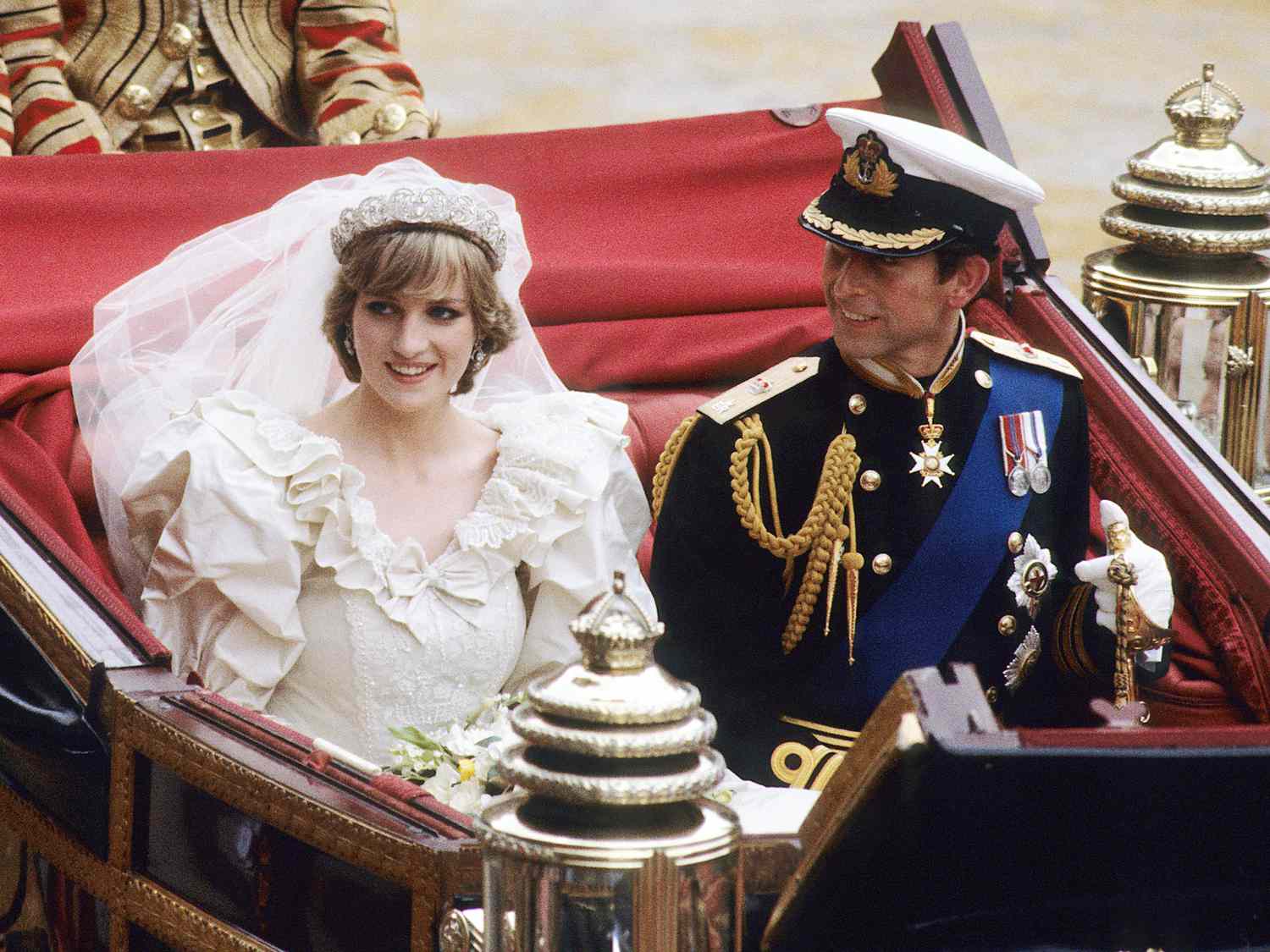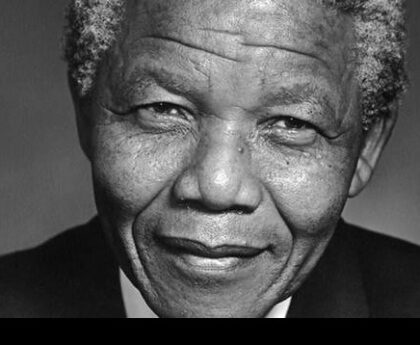Last Updated on 4 June 2023 by Biographybliss Team
Princess Diana was born on July 1, 1961, in Sandringham, Norfolk. She was the third of four children to Viscount and Viscountess Althorp. Lady Diana Frances Spencer, as she was known before her marriage to Prince Charles, became the Princess of Wales in 1981 after her marriage to the heir to the British throne.
Princess Diana was an icon of beauty, grace, and compassion, who captured the hearts of millions worldwide. Despite facing several challenges in her personal life, Diana’s dedication to charity work and her unwavering spirit made her an exemplary figure in the public eye.
- Her Legacy as an Icon of Grace and Compassion
- Early Life
- Lady Diana Spencer’s Ancestry and Family Background
- Growing Up in Park House, Sandringham
- Education and Interests as a Young Woman
- Engagement to Prince Charles
- How They Met and the Proposal
- Preparations for the Royal Wedding of 1981
- New Role as Princess of Wales
- Public Life & Involvement with Charities
- Becoming an International Style Icon
- Support for a Range of Causes & Charities
- Private Life and Relationships
- Establishing Her Own Identity Outside the Monarchy
Her Legacy as an Icon of Grace and Compassion
Princess Diana’s legacy as an icon of grace and compassion still resonates with people all over the world. Her dedication to charity and tireless efforts to bring awareness to important causes has touched countless lives, leaving an indelible mark on history and society.
Diana’s commitment to charitable work knew no bounds. She was deeply moved by the plight of disadvantaged people, especially children, and became a passionate advocate for their well-being. Her work with AIDS and mental health patients was groundbreaking, breaking down stigmatizing barriers for those living with such conditions. She also supported causes such as cancer research, homelessness, and landmine awareness, inspiring others to take action as well.
Diana’s influence is still felt today, not only through the various awareness campaigns and charities she supported but also through the work of her sons. Prince William and Prince Harry have continued their mother’s charitable legacy, dedicating their time and resources to various causes such as mental health advocacy and veterans’ support.
Apart from her charitable work, Diana captivated the world with her style and demeanor. She was widely regarded as a fashion icon, and her grace and dignity in the public eye were unmatched. Despite being hounded by the media and facing intense scrutiny, she remained steadfast and resolute, often rising above the negative attention she received.
In conclusion, Princess Diana’s legacy as an icon of grace and compassion still shines brightly. Her charitable work, advocacy, and quiet strength continue to inspire countless people worldwide, making her influence truly timeless and influential.
Early Life
Early Life: Lady Diana Frances Spencer was born on July 1, 1961, in Sandringham, Norfolk, England. She was the third of four children of John Spencer, the eighth Earl Spencer, and Frances Shand Kydd.
Diana grew up in Park House, situated on the queen’s Sandringham estate. Her childhood was marked by her parents’ divorce when she was just eight years old, which had a profound impact on her. Despite this, Diana was described as a happy child who loved animals and enjoyed playing with her siblings.
Lady Diana Spencer’s Ancestry and Family Background
Lady Diana Spencer, later known as Princess Diana, was born on July 1, 1961, in Sandringham, Norfolk, England. She was the third of four children born to John Spencer, 8th Earl Spencer, and his wife, Frances. Lady Diana’s family was well-known and influential in British society. Her paternal grandmother, Lady Cynthia Hamilton, was a close friend of Queen Elizabeth II’s mother, and her great-grandmother, Lady Rothes, survived the sinking of the Titanic.
Diana’s early years were spent at Park House, the Spencer family’s country estate in Norfolk, until her parents’ divorce when she was just eight years old. Following the divorce, her father was granted custody, while her mother moved to London. Diana’s relationship with her stepmother, Raine, was strained, and she often felt like an outsider in her own household.
Despite the upheaval in her family life, Diana was a good student and attended a boarding school in West Heath, Kent, where she excelled in sports and developed a love for dance and music. At the age of 16, she moved to Switzerland for a year to finish her education, which included studies in cooking and housekeeping.
It was during her teenage years that Diana began to develop the qualities that would make her a beloved figure around the world. She was known for her empathy and kindness towards others, and she volunteered at a nursery school where she worked with young children. Diana also had a love for animals and spent time riding horses and caring for her own pets.
In conclusion, Lady Diana Spencer’s upbringing and family dynamics played a significant role in shaping her personality and worldview. Despite the challenges she faced, including her parents’ divorce and a difficult relationship with her stepmother, Diana remained kind-hearted and empathetic towards others. These qualities, along with her education and experiences during her teenage years, would prepare her for the public life that lay ahead as a member of the British royal family.
Growing Up in Park House, Sandringham
Princess Diana’s early years were spent at Park House, the Spencer family’s estate located in the Sandringham estate of Norfolk. Diana was the youngest daughter of Viscount and Viscountess Althorp, and she was one of five children.
Growing up in Park House, Diana had a privileged upbringing, but it was not without its struggles. Her parents’ marriage had its ups and downs, and they eventually divorced when Diana was just eight years old. Following the divorce, Diana’s father was granted custody, and her mother moved to London. Diana’s relationship with her stepmother, Raine, was complicated, and she often felt like an outsider in her own household.
Despite the family challenges, Diana had a close relationship with her siblings, and they often played together on the estate grounds. Diana was known for being a creative and imaginative child, and she loved to play dress-up and put on performances for her family.
As a member of an aristocratic family, Diana had interactions with the royal family from an early age. She first met Prince Charles when she was just a young child, but it wasn’t until years later that their relationship would develop into something more.
Diana’s upbringing at Park House also played a significant role in shaping her interests as a young woman. She developed a love for animals and spent time horseback riding and caring for her own pets. Diana was known for her artistic talents, and she enjoyed singing, playing piano, and writing poetry. Later on, her interests would extend to charity work, which is where she found her true calling.
Overall, Diana’s upbringing at Park House in Sandringham helped shape the person she would become later in life. Her interactions with the royal family, family life challenges, and early experiences with animals and the arts were all significant in molding her into the iconic figure of grace and compassion that she became.
Education and Interests as a Young Woman
As a young woman, Diana received home schooling before attending boarding schools, including an all-girls school in Kent. She also briefly attended a Swiss finishing school, where she refined her French skills and learned the art of cooking.
After returning to London, Diana lived with friends and pursued her interests and activities, which included a love of music, dance, and fashion. She was known for her stylish and chic wardrobe, and her iconic fashion choices continue to inspire today.
Diana also worked as a kindergarten assistant at the Young England School in Pimlico, where she enjoyed working with young children and honed her nurturing instincts.
Despite her privileged upbringing, Diana had a strong work ethic and was committed to making a difference in the world. Her education and experiences as a young woman helped shape her values and passions, which she would later use to become a beloved and influential figure known for her grace and compassion.
Engagement to Prince Charles
Lady Diana Spencer was just a young woman in her early twenties when she became engaged to Prince Charles, the heir to the British throne.
Their engagement was seen as a fairytale come to life, and the world was captivated by the charming story of a stunning young woman who had captured the heart of a prince. Their engagement was a major event that brought attention to Diana and her life, and would set the course for her future in the public eye.
How They Met and the Proposal
Lady Diana Spencer met Prince Charles at a family gathering when she was only sixteen. They did not interact much at the time, but they caught each other’s attention.
Lady Diana became a popular figure in society after graduating from finishing school in Switzerland in 1978 and returning to London.
In 1980, they were reunited when Charles visited her family’s estate, Althorp. It was there that the prince noticed Lady Diana more deliberately, and they began to see each other more often.
Prince Charles proposed to Lady Diana in February 1981 with a beautiful engagement ring. It was an oval-shaped sapphire surrounded by diamonds and set in white gold. The ring’s unique design caught the attention of the press, and it became an instant sensation around the world. The media frenzy surrounding this engagement was intense, with journalists camped outside of Buckingham Palace and Kensington Palace for weeks, waiting to report every detail.
The public reaction to the news was just as intense, as people across the world followed the story avidly. The prince had finally found a bride after years of speculation, and it was a young, beautiful English woman, who would eventually become one of the most revered and beloved women in the world.
In conclusion, the engagement of Prince Charles and Lady Diana was a major event in the history of the British royal family. The excitement surrounding it, both from the media and the public, indicates the anticipation of the upcoming royal wedding. With the stage set for a fabulous affair, the two lovers stood on the threshold of a new chapter in their lives.
Preparations for the Royal Wedding of 1981
In February 1981, Prince Charles officially proposed to Lady Diana and she happily accepted. She had selected her own engagement ring, a stunning oval-shaped sapphire surrounded by diamonds and set in white gold, which quickly captured the attention of the public and media alike.
In preparation for their upcoming nuptials, the couple made arrangements for a grand wedding ceremony to be held on July 29, 1981. St. Paul’s Cathedral was chosen as the venue, a departure from the traditional Westminster Abbey, because it could accommodate a larger number of guests.
The “fairytale wedding” ceremony was watched by a global audience of 750 million people, making it one of the most watched broadcasts of all time. The couple opted to alter the traditional wedding vows by excluding the promise to “obey”, a sign of their modern outlook and a change from the traditional patriarchal expectations of women.
Diana wore a magnificent £9,000 wedding dress, with a 25-foot train, which was designed by David and Elizabeth Emanuel. It was made of silk taffeta and featured antique lace, hand embroidery, and sequins. The Queen gave visible tokens of the couple’s membership in the royal family to Diana, symbolizing her new role as a princess.
After their wedding, the couple resided in Kensington Palace and later Highgrove House. In 1982, Diana became pregnant with their first son, Prince William. However, she suffered from postpartum depression after the birth, a condition that was not widely recognized at the time. Despite this, Diana was a beloved figure and her grace and beauty captivated people around the world.
New Role as Princess of Wales
Following her marriage to Prince Charles, Lady Diana Spencer became known as the Princess of Wales. This title was traditionally given to the wife of the heir to the British throne, and it placed Diana in a position of great public service and responsibility.
As the Princess of Wales, Diana was expected to undertake various royal duties on behalf of Queen Elizabeth II. She made numerous official visits across the United Kingdom and the world, meeting with heads of state, diplomats, and dignitaries. She was often accompanied by Prince Charles on these official engagements, and the couple was viewed as a symbol of the monarchy’s continued relevance and significance.
Diana quickly gained popularity among the British public due to her friendly and approachable personality. She was often seen interacting with people from all walks of life, and she used her platform to bring attention to various causes and issues. She was particularly passionate about the welfare of children, the fight against HIV/AIDS stigma, and the elimination of landmines in war-torn countries.
One of Diana’s most significant accomplishments was her work to raise awareness about the dangers of landmines. She visited minefields in Angola and Bosnia, highlighting the devastating impact these weapons have on civilian populations. She was also involved in numerous charitable organizations, including the British Red Cross, the National AIDS Trust, and the Great Ormond Street Hospital for Children.
Diana’s approach to charity work was considered unconventional at the time. Instead of simply attending glamorous events and writing checks, she preferred to be more hands-on and personally involved with the causes she supported. She often visited hospitals and schools, taking the time to speak with patients and students. She was also known for her physical contact with people, hugging and holding hands with those in need.
Overall, Diana’s new role as the Princess of Wales was characterized by her dedication to public service, her humanitarian work, and her unconventional approach to charity. She remains an iconic figure of grace and compassion, even decades after her tragic death.
Public Life & Involvement with Charities
Throughout her public life, Princess Diana became an icon of grace and compassion. She used her platform to bring attention to important causes and was involved in various charitable organizations.
Diana was known for her unconventional approach to charity work, which involved being personally involved and hands-on with the causes she supported. Her physical contact with those in need, such as hugging and holding hands, endeared her to the public and helped make her a beloved figure.
Becoming an International Style Icon
Princess Diana was more than just a member of the British royal family – she was an international style icon. Her fashion choices were eagerly followed the world over and her impact on the fashion industry continues to this day.
Diana’s journey to becoming a style icon began shortly after she married Prince Charles in 1981. At the time, she was a shy, 20-year-old kindergarten teacher named Lady Diana Spencer. However, her fashion sense quickly caught the attention of the public. Her early style was heavily influenced by the 1980s, with bold prints, statement ruffles, and dramatic shoulders.
As she grew more comfortable in the public eye, Diana’s style evolved. She began experimenting with sleek, sophisticated looks and elegant eveningwear. Her fashion choices also began to convey messages and raise awareness for various causes. For example, in 1997, she famously wore a pale pink Catherine Walker suit on her visit to Angola to raise awareness about landmines.
Some of Diana’s most iconic outfits include the black off-the-shoulder dress she wore at the Serpentine Gallery summer party in 1994, the pink and black polka-dot dress she wore to visit a children’s hospital in 1989, and the shimmering blue gown she wore to dance with John Travolta at the White House in 1985.
But Diana’s influence didn’t end with her tragic death in 1997. Her style legacy lives on, and her impact on the fashion industry can still be seen today. Designers continue to draw inspiration from her timeless elegance and classic sophistication, and fashion lovers continue to flock to exhibitions and retrospectives dedicated to her style.
In the end, Princess Diana’s impact was about more than just fashion. She used her clothing choices to convey messages about important issues and to connect with people in a deeply personal way. Her style was a reflection of her grace, compassion, and enduring legacy.
Support for a Range of Causes & Charities
Princess Diana was not only a style icon but also an icon of grace and compassion. Throughout her life, she tirelessly worked to support a range of causes and charities. One of her most significant contributions was her advocacy against landmines, which caused widespread harm in many countries worldwide.
Diana’s campaign towards landmines began in 1997, when she traveled to Angola and visited minefields in Huambo. Her visit was part of an effort to promote global awareness of the danger posed by landmines.
She went on to lobby governments to support the ban on landmines, and her efforts led to the signing of the Ottawa Treaty, which called for the universal ban of landmines.
Her work for animal protection was another testament to her compassionate nature. She was actively involved in several animal welfare organizations, including the RSPCA, during her lifetime.
Diana was also a patron of several charities that helped the homeless, drug addicts, and the elderly. She served as president of Great Ormond Street Hospital for Children in London from 1989 until her death, and her patronage helped to raise millions of pounds for the hospital. Her dedication to aiding the hospital’s patients, especially children, earned her the nickname “England’s Rose.”
In recognition of her philanthropic contributions, Diana received several awards. Among these was the Honorary Freedom of the City of London, conferred on her in 1996. She also received the International Leonardo Prize in Moscow for her humanitarian work.
Even after her divorce from Prince Charles, Diana retained six royal patronages. These included the English National Ballet, the Leprosy Mission, the National Aids Trust, among others. After her death, several charities were established in her name, such as the Diana, Princess of Wales Memorial Fund, and the Diana Award, which recognizes and celebrates young people inspiring positive change in the world.
Overall, Princess Diana’s support for a range of causes and charities reflects her deep compassion towards her fellow beings. She left behind a legacy of goodwill, and her tireless work has helped to make the world a better place for many.
Private Life and Relationships
Princess Diana’s private life and relationships have been a subject of public interest, especially during and after her marriage to Prince Charles.
Despite struggles with the media and tabloids, Diana lived a life of grace and compassion, leaving behind an incredible legacy of philanthropic work and a lifetime of impact.
Her personal life was also marked by challenges, including her high-profile divorce and struggles with mental health, but her unwavering dedication to making a difference in the world continues to inspire people today.
Establishing Her Own Identity Outside the Monarchy
Princess Diana was a true icon of grace and compassion, with a unique ability to capture the attention of the world and become a symbol of hope for many.
One of the most remarkable things about her was her willingness to break free from the traditional mold of the royal family, establishing her own identity outside the monarchy. Her efforts to forge her own path made her stand out as a true trailblazer, and her legacy continues to inspire millions today.
One of the ways Princess Diana established her own identity was through her involvement in various charities. She was a tireless advocate for causes such as HIV/AIDS research, homelessness, and education. Her work with organizations like the British Red Cross and the Centrepoint charity helped raise awareness about the plight of the less fortunate and gave them a voice they may not have had otherwise.
Another way Princess Diana established her own identity was through her interest in fashion and style. She was known throughout the world for her impeccable taste and sense of style, and she used her influence to support and promote British fashion and design. Her iconic dresses and outfits became an inspiration for many, and she helped bring attention to the fashion industry at a time when it was not as widely recognized as it is today.
Princess Diana was also known for her personal relationships, both within and outside the royal family. Her marriage to Prince Charles may have been troubled, but she remained a devoted mother to her children and a loyal friend to those closest to her. She also had several romantic relationships throughout her life, including a highly-publicized one with Pakistani heart surgeon Hasnat Khan.
Perhaps most importantly, Princess Diana used her position of influence to raise awareness about issues close to her heart, such as mental health and landmines. She was a staunch advocate for those who struggled with mental illness, and she worked tirelessly to reduce the stigma surrounding mental health issues. She also campaigned for the international banning of landmines, visiting war-torn countries and speaking out about the devastating effects of these weapons.
FAQs
What was Princess Diana known for?
Princess Diana was known for her charitable work and advocacy on behalf of those who were less fortunate. She was also known for her fashion sense and personal relationships.
What was Princess Diana’s legacy?
Princess Diana's legacy is one of compassion and advocacy. She used her platform to give a voice to those who were marginalized, and she worked tirelessly to raise awareness about issues such as mental health and landmines. She also inspired people around the world with her dedication to charitable causes and her commitment to making a positive difference in the world.
What happened to Princess Diana?
Princess Diana died in a car crash in Paris on August 31, 1997.
How is Princess Diana remembered today?
Princess Diana is remembered today as a true icon of grace and compassion. Her memory lives on through the many charities and organizations that she supported during her lifetime, and through the ongoing efforts to raise awareness about the issues that were important to her.
Conclusion
In conclusion, Princess Diana was a true icon of grace and compassion whose life and legacy continue to inspire people around the world.
Her contributions to society were numerous, from her advocacy for mental health and landmine awareness to her work with charitable organizations. Princess Diana also had a significant impact on popular culture, bringing her unique style to the forefront of fashion and setting trends that are still popular today.
Sadly, her life was cut short by a tragic car accident in 1997, which sparked an outpouring of grief around the world. Nevertheless, Princess Diana’s spirit lives on, and her legacy as a true humanitarian and lover of life endures. She will always be remembered as a shining example of kindness and compassion, and an inspiration to all those who strive to make a positive difference in the world.




